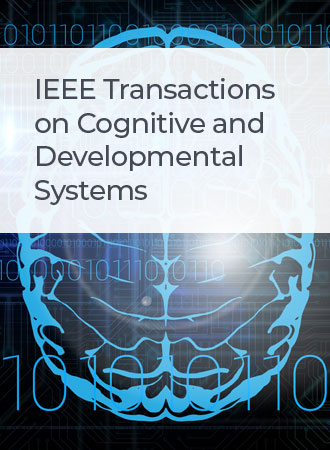The Effect of Audio Trigger’s Frequency on Autonomous Sensory Meridian Response
IF 4.9
3区 计算机科学
Q1 COMPUTER SCIENCE, ARTIFICIAL INTELLIGENCE
IEEE Transactions on Cognitive and Developmental Systems
Pub Date : 2024-11-27
DOI:10.1109/TCDS.2024.3506039
引用次数: 0
Abstract
Autonomous sensory meridian response (ASMR) is an experience-dependent sensation in response to audio and audio–visual triggers. The acoustical characteristics of audio trigger have been speculated to be in connection with ASMR. To explore the effect of audio trigger’s frequency on ASMR and then to discover ASMR’s mechanism, the ASMR phenomenon under random-frequency audio, high-frequency audio, low-frequency audio, original audio, white-noise and rest were analyzed by EEG. The differential entropy and power spectral density were applied to quantitative analysis. The results suggest the audio’s frequency can modulate the brain activities on音频触发频率对自主感觉经络反应的影响
自主感觉经络反应(ASMR)是一种经验依赖的感觉,是对音频和视听触发的反应。推测音频触发器的声学特性与ASMR有关。为了探讨音频触发频率对ASMR的影响,进而发现ASMR的发生机制,通过脑电图分析了随机音频、高频音频、低频音频、原始音频、白噪声和静止音频下的ASMR现象。利用微分熵和功率谱密度进行定量分析。结果表明,音频可以调节大脑在θ、α、β、γ和高γ频率上的活动。此外,ASMR反应者和无反应者可能通过抑制γ和高γ频率的大脑中央区域活动而对低频音频和白噪声更敏感。此外,低频音频触发诱发的ASMR可能涉及更多的注意选择或语义加工,可能不会改变大脑在信息加工和执行方面的功能。
本文章由计算机程序翻译,如有差异,请以英文原文为准。
求助全文
约1分钟内获得全文
求助全文
来源期刊

IEEE Transactions on Cognitive and Developmental Systems
Computer Science-Software
CiteScore
7.20
自引率
10.00%
发文量
170
期刊介绍:
The IEEE Transactions on Cognitive and Developmental Systems (TCDS) focuses on advances in the study of development and cognition in natural (humans, animals) and artificial (robots, agents) systems. It welcomes contributions from multiple related disciplines including cognitive systems, cognitive robotics, developmental and epigenetic robotics, autonomous and evolutionary robotics, social structures, multi-agent and artificial life systems, computational neuroscience, and developmental psychology. Articles on theoretical, computational, application-oriented, and experimental studies as well as reviews in these areas are considered.
 求助内容:
求助内容: 应助结果提醒方式:
应助结果提醒方式:


